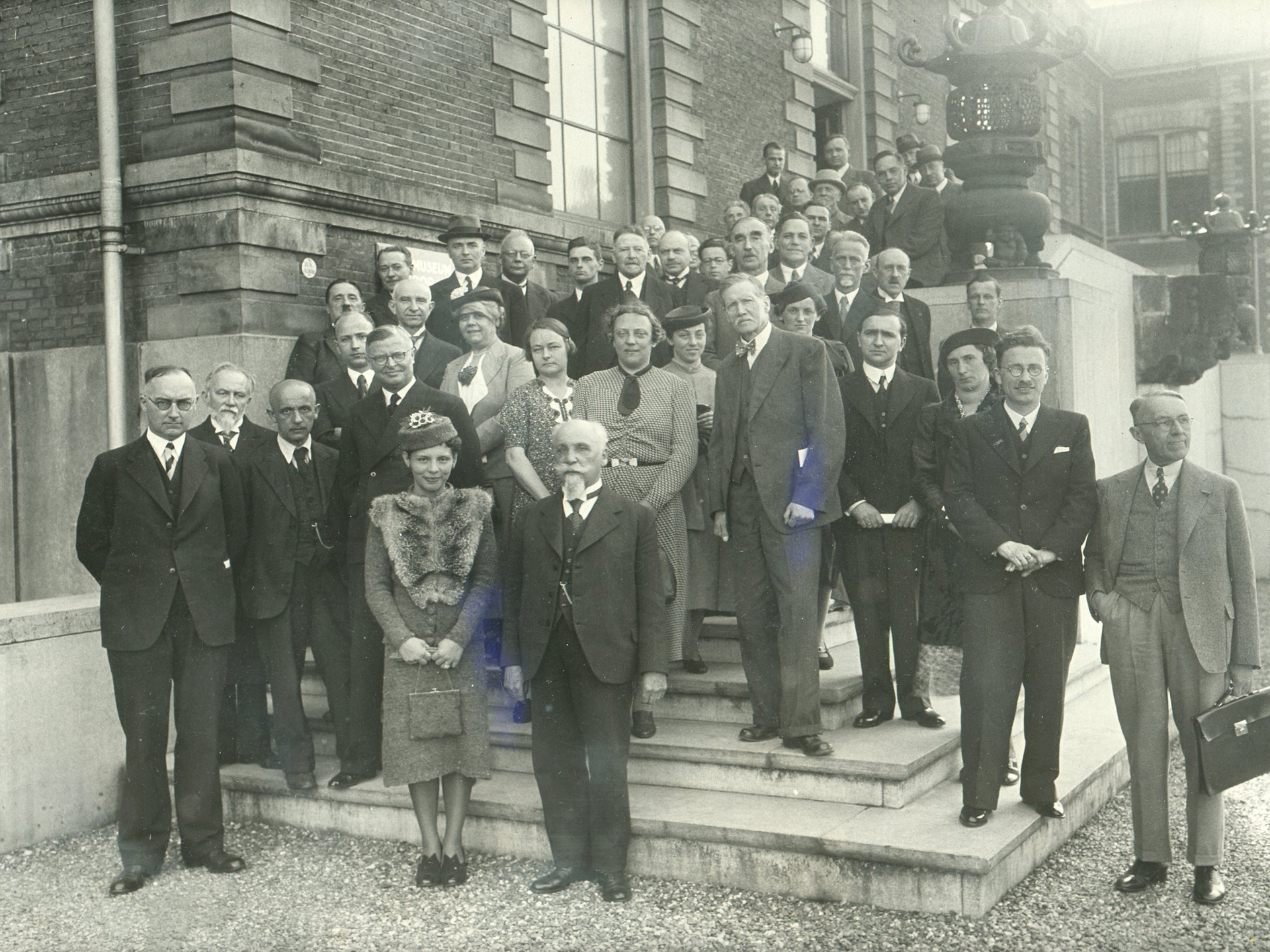
Herta Mohr: Headstrong female scientist in a man's world
As a twelve-year-old girl, Nicky van de Beek became intrigued by the tomb chapels in Saqqara, Egypt. Now she is doing her PhD on them, just like another Leiden Egyptologist decades earlier. Herta Mohr persevered with her research during World War II. Now she is the namesake of the first Leiden building with a woman's name.
'When I visited the National Museum of Antiquities during one of my lectures, my professor René van Walsem said that one of the tomb chapels there hadn't really been properly studied,' says Van de Beek. 'There was supposedly only one booklet about it, so I went to look it up for my master's dissertation.'
She found a copy In the Leiden NINO library, written by one Herta Mohr in the 1940s. 'I immediately noticed how thin it was. The drawings were very scratchy, and the large fold-out plates with drawings of the tomb were missing.' At the same time, the research shows thoroughness and also used modern techniques such as photography, which were modern for that time.
Following her passion
The contrast fascinates Van de Beek. Who was this Herta who completed this publication during wartime? 'She turned out to be from a well-to-do family of doctors from Vienna,' she says. 'She herself also started studying medicine there, but she soon switched to Egyptology, which at the time was a sort of African Studies. She attended lectures in African languages, philosophy and Ancient Egyptian. For a woman in the 1930s, it's remarkable that she followed her own interests like that.'
It was probably during one of these lectures that she learned of a so-called mastaba tomb in a Viennese museum. Van de Beek: 'I'm still searching though a lot of sources, but it must almost certainly be that she, like me, was taken to the museum by a lecturer to see what was available there.'
Mohr wrote about her findings and spoke about them at a conference in Belgium, which was also unusual for a student at the time. 'In this photo of a conference, you see almost only men, some of whom have brought their wives,' says Van de Beek. 'Herta is there among them as one of the few female scientists. She really secured her position in a man's world.'
Repeatedly displaced
While Mohr's academic star was rising, her own position in Austria was becoming increasingly precarious. In 1938, she exchanged her fatherland for Leiden. 'She became Catholic here and joined the Catholic association Augustinus,' says Van de Beek. 'We don't know if that was out of conviction or self-preservation.' In any case, Mohr managed to continue her research on the tomb chapel, until Germany also invaded the Netherlands in 1940.
Mohr, born Jewish, was forced to leave Leiden. She continued her work as best she could In Bilthoven and Eindhoven. 'You can see in letters that she was very headstrong, says Van de Beek. 'She tried to get the books she needed for her research transported from the NINO library to Eindhoven, she made contacts with someone who might be able to take photos of the tomb, and she worked to organise lectures, even though she was no longer allowed to attend them herself. She knew what she wanted and often managed to get it. She even wrote that she was glad she stayed in the Netherlands to finish her book. That's very poignant, given her end.'
Proud despite everything
In August 1942, Mohr was arrested and taken to Westerbork. 'There she worked as a translator, among other things,' says Van de Beek. 'She spoke fluent German, French, English and Dutch, of course.' Occasionally, Mohr also sent a card from the camp. 'In one of her cards, she wrote that her friends had published her book. So she knew it had been published and was proud of it, even though she had to make some concessions to the appearance of the book due to the war.'
In January 1944, Mohr was sent on to Auschwitz, only to be transferred to Bergen-Belsen a year later due to the advancing Russian forces. She died there shortly before liberation in the spring of 1945, at thirty years old. Van de Beek: 'It's wonderful that, partly thanks to Carolien van Zoest's campaign, a building has now been named after her that commemorates her extraordinary achievements.'


